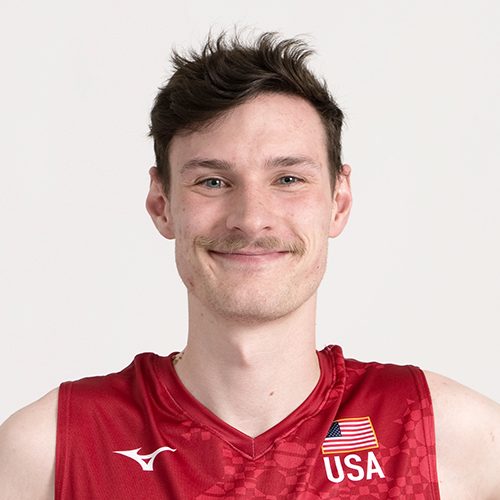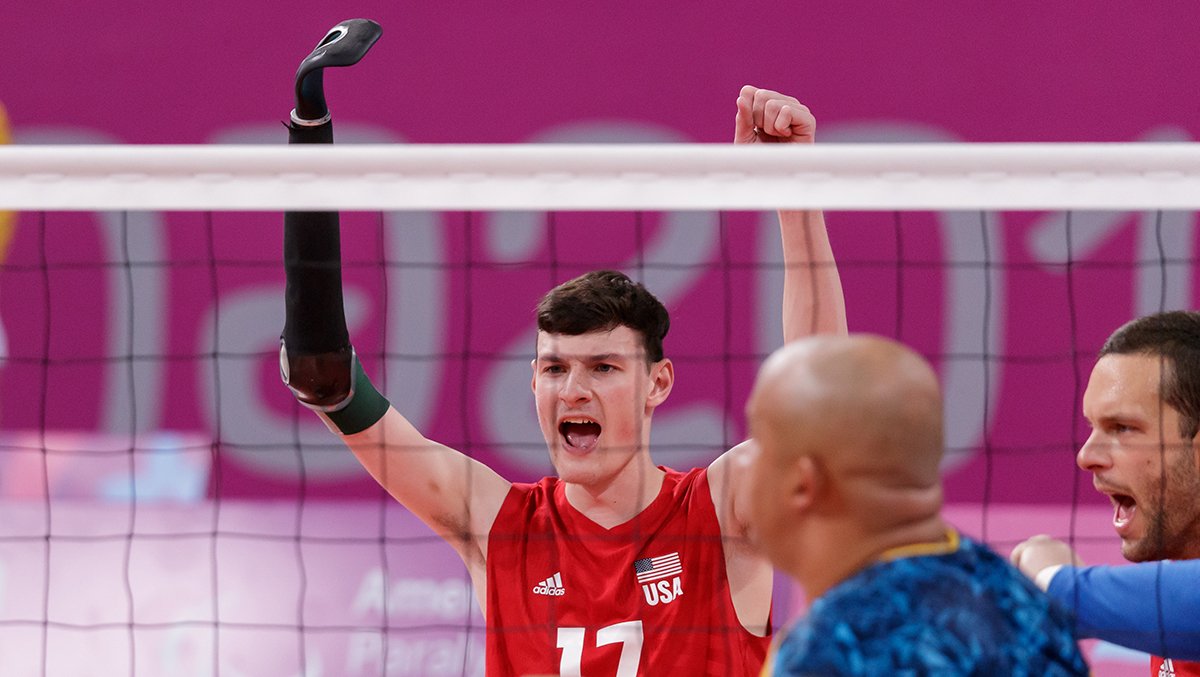
Zach Upp
Opposite, 6-7
Resources for
Follow USAVolleyball

By: Elliot Blake, Manager, Sitting Volleyball, and USAV National Referee and Scorer
Whether its homework, lunch money, shoes or anything else around the house, kids these days just lose everything.
Take current U.S. Men’s Sitting National Team member (and reigning USAV men’s sitting player of the year) Zach Upp. All he was trying to do was get a block in high school, but he lost his artificial arm in the process. (see photo at right)
Some think this could be dangerous and that his prosthetic should be padded – rules would require a half-inch of protective material. But if we add such padding, that makes his arm one inch bigger than his natural arm since prosthetics are typically made to be identical to the real thing.
If we change the size of his arm, aren’t we changing the way he plays the game?
World ParaVolley and the FIVB share a similar rule regarding prosthetics – 4.5.1: It is forbidden to wear objects which may cause injury or give an unfair artificial advantage to the player. Bandages may be worn, but anything that may be dangerous is not permitted.
USAV 4.5.1 is modified slightly: It is forbidden to wear hats or casts, even if padded. Braces, prosthetic limbs or other headgear that may cause injury or give an artificial advantage to the player must not be worn. If a brace, prosthetic limb or headgear is used, padding or covering may be necessary.
We are all concerned about not causing injury to other players. But what if we are too concerned about a prosthetic or brace compared to another object?
In 2017, I argued in support of a high school player who was told she could not play with her prosthetic arm without it being padded because it posed a risk to others. While conducting research for the argument, Erin Wasserman, director of the NCAA Injury Prevention Program, gave me some of her own key research. According to a nationwide surveillance program in 2011-2014, 13 percent of injuries were caused by a collision between players. However, 21 percent of injuries came from contact with the ball. Should we be padding that?
It’s certainly possible collisions between players cause more severe injuries than the ball – the research didn’t measure the type or severity of injuries. But athletes play sitting volleyball with upper-limb prosthetics all the time and I have yet to see a significant injury because of a prosthetic. There have been elbows connecting with teammates’ faces, fingers stepped on by knees and nubs, and even kicks to the groin (players sit across from one another at the net).
Perhaps it’s only our perception that prosthetic limbs are a concern because they are not used by the average volleyball player.
As a referee, you will see thousands of kids on your court throughout your career. Eventually, one will have a physical disability. It may not be as obvious as a prosthetic limb, but it could be a limitation in range of motion in an elbow, shoulder, knee, ankle or hip joint, or muscular atrophy of a limb.
We always need such athletes for the Paralympic programs, both sitting and now beach paravolley. Should you ever meet such an athlete, please recommend that they contact us at [email protected] or get their team name and uniform number and let us know. We will gladly reach out to them to get the athlete involved and in pursuit of Paralympic gold!